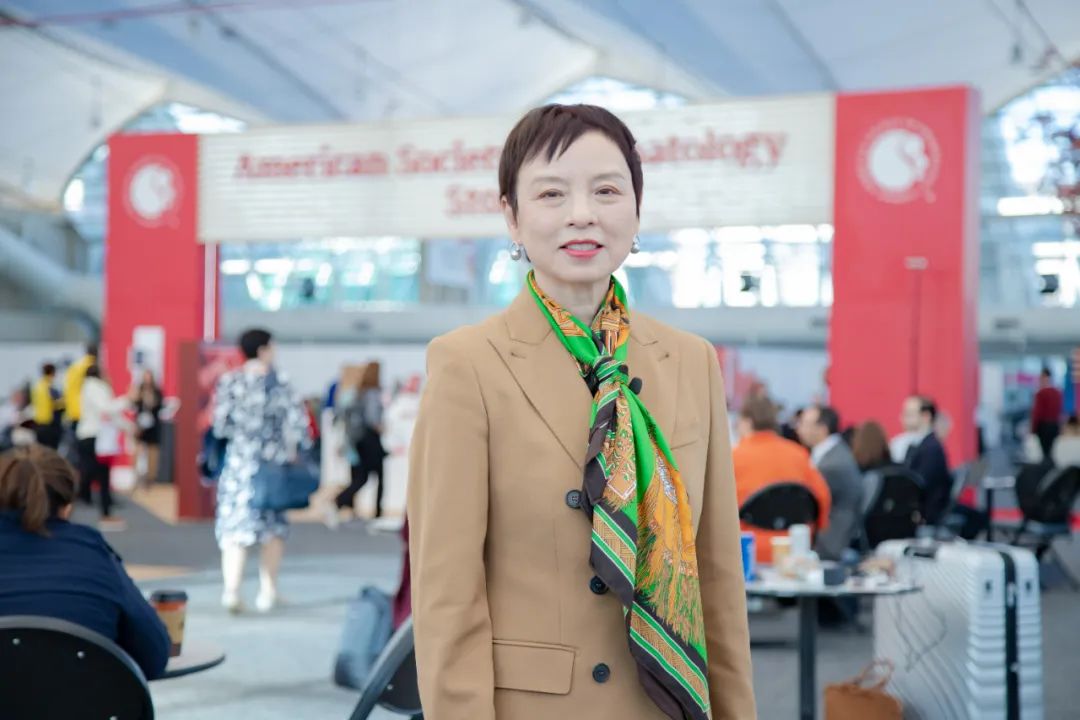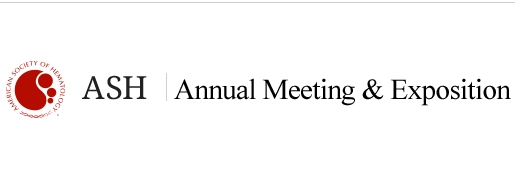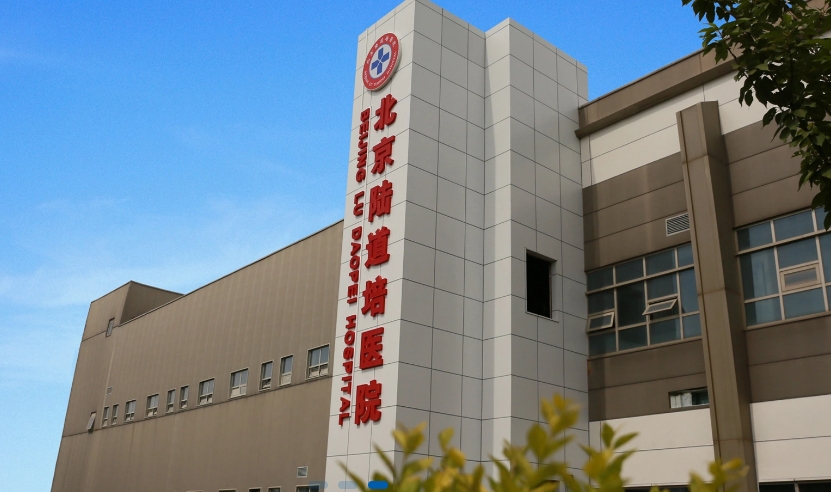Warning: Trying to access array offset on value of type bool in /www/wwwroot/www.medtourcn.com/wp-content/themes/medical-directory/framework/theme/medicaldirectory-image.php on line 78
Warning: Trying to access array offset on value of type bool in /www/wwwroot/www.medtourcn.com/wp-content/themes/medical-directory/framework/theme/medicaldirectory-image.php on line 79

**2024 EHA | Breaking Through Multiple Myeloma Treatment Bottlenecks: Significant Advances of Equecabtagene Autoleucel in High-Risk NDMM Patients**
**2024 EHA | Breaking Through Multiple Myeloma Treatment Bottlenecks: Significant Advances of Equecabtagene Autoleucel in High-Risk NDMM Patients**

Multiple Myeloma
Multiple Myeloma (MM) is a malignant plasma cell disorder and one of the most common hematologic malignancies. In China, approximately 20,000 new cases of newly diagnosed multiple myeloma (NDMM) are reported annually, with a median age at diagnosis over 60 years. It is reported that Chinese MM patients generally exhibit higher rates of cytogenetic abnormalities, with an incidence rate exceeding 40%, which is significantly higher than in Western countries.
High-risk MM patients often respond poorly to existing treatment regimens and face limited treatment options. Many elderly patients are frail and have multiple comorbidities, making them less tolerant of the adverse reactions associated with current therapies, particularly autologous stem cell transplantation (ASCT). Once the disease progresses to a refractory/relapsed state, the combination of advanced age, frailty, and high-risk cytogenetic abnormalities leads to limited salvage treatment options, worsening efficacy, and poor prognosis. Thus, selecting effective frontline therapy for NDMM patients, especially high-risk elderly patients unsuitable for transplantation, is a pressing clinical need, requiring innovative therapies to supplement existing treatments. The new generation of cell immunotherapies, exemplified by Equecabtagene Autoleucel, holds promise to fill this gap and potentially become a breakthrough for high-risk NDMM.
In the FUMANBA-1 study, which included 69.5% high-risk patients, Equecabtagene Autoleucel achieved an ORR of 96.1% and has been approved in China for treating third-line or later relapsed/refractory multiple myeloma (R/R MM) patients. This EHA meeting is the first to present oral data on the efficacy and safety of Equecabtagene Autoleucel in the FUMANBA-2 study for high-risk, newly diagnosed, transplant-ineligible MM patients.
### Study Introduction
FUMANBA-2 is a multicenter, open-label, single-arm Phase I study designed to evaluate the efficacy and safety of Equecabtagene Autoleucel in transplant-ineligible NDMM patients with 100% high-risk features (defined by mSMART 3.0: RISS Stage III, double-hit, or triple-hit). Patients received four cycles of induction therapy, including the VRd regimen (Bortezomib, Lenalidomide, Dexamethasone), the VCD regimen (Bortezomib, Cyclophosphamide, Dexamethasone), or the PAD regimen (Bortezomib, Doxorubicin, Dexamethasone). After the third cycle of induction therapy, T cells were collected from patients unsuitable for ASCT and Equecabtagene Autoleucel was prepared. After lymphodepletion, patients received a single infusion of Equecabtagene Autoleucel at a dose of 1.0 x 10^6 CAR-T cells/kg. The primary efficacy endpoints were the proportion of MRD-negative patients and progression-free survival (PFS). Secondary endpoints included objective response rate, duration of response, safety, pharmacokinetics, and pharmacodynamics.
### Study Results
As of January 25, 2024, 16 patients received Equecabtagene Autoleucel, with a median age of 58.5 years (51-69) and a median follow-up time of 13.1 months (7.9-24.3). All patients had high-risk cytogenetics, with 62.5% (10/16) being double-hit, 12.5% (2/16) being triple-hit, and 25% (4/16) having extramedullary disease. 37.5% (6/16) were R-ISS Stage III, with one patient each combining R-ISS Stage III with double-hit and triple-hit characteristics.
The median follow-up time after Equecabtagene Autoleucel infusion was 7.46 months (2.8-18.1). The median PFS was not reached, with a 12-month PFS rate of 84.4% (95% CI: 49.31-96.00). All subjects achieved MRD negativity, with 71.4% (95% CI: 25.8-92.0) maintaining MRD negativity for over 12 months. The objective response rate (ORR) was 100%, with 93.8% (15/16) achieving stringent complete response (sCR).
Grade 1-2 cytokine release syndrome (CRS) occurred in 68.8% (11/16) of patients, with no grade 3 or higher CRS, immune effector cell-associated neurotoxicity syndrome (ICANS), or neurotoxicity. The most common grade 3 or higher drug-related adverse events were hematologic, with a 25.0% (4/16) incidence of grade 3 or higher infectious disease adverse events.
The median peak CAR copy number in peripheral blood was reached on day 10 (7-21) post-infusion, with a median peak level of 79,681.299 copies/μg gDNA. 81.25% (13/16) of patients achieved free B cell maturation antigen (sBCMA) clearance within one month post-infusion. Median peak levels of inflammatory cytokines IL-6, CRP, and ferritin were 64.28 pg/mL (9.12-3017.83), 49.30 mg/L (3.66-117.30), and 553.35 ng/mL (68.10-2349.00), respectively. The median peak times for IL-6 and CRP were day 7 and day 10, respectively, with no significant change in serum ferritin levels compared to pre-infusion.
### Study Outlook
The FUMANBA-2 study of Equecabtagene Autoleucel demonstrates the efficacy and safety of a novel fully human BCMA CAR-T therapy in high-risk, transplant-ineligible, newly diagnosed multiple myeloma patients. This is the first international report of CAR-T therapy as frontline treatment in this specific population. The study highlights the potential application of cell immunotherapy in the MM field. Compared to traditional chemotherapy and new drug treatments, frontline CAR-T therapy for NDMM has the potential to further improve response rates, extend survival, and improve prognosis, particularly for high-risk cytogenetic abnormalities and high tumor burden. For elderly and frail patients who are unsuitable for hematopoietic stem cell transplantation, CAR-T therapy may fill the treatment gap to some extent. The one-time treatment approach, as opposed to continuous chemotherapy or multiple transplants, offers patients better quality of life and treatment convenience. Although CAR-T therapy carries risks such as CRS and neurotoxicity, these side effects are manageable in many studies, and safety improves with treatment experience and management strategies. Bringing CAR-T therapy to the frontline provides patients with more diverse and promising treatment options. However, large-scale, long-term follow-up studies are needed to validate its long-term efficacy and survival benefits, and further exploration and optimization are required for the best administration timing, regimen, and duration.
In summary, the FUMANBA-2 study of Equecabtagene Autoleucel shows significant treatment potential in newly diagnosed, transplant-ineligible multiple myeloma patients. With accumulating research evidence and advances in CAR-T technology, we anticipate CAR-T therapy will benefit more patients in the future.
🎉🎉To assess whether the condition is suitable for CAR-T or clinic therapy, you can submit Advanced Medicine in China for preliminary evaluation!
WhatsApp: +8613717959070
Email: doctor.huang@globecancer.com
#EquecabtageneAutoleucel #MultipleMyeloma #MMTreatment #HighRiskMM #NDMM #CAR_Therapy #Immunotherapy #BloodCancer #OncologyResearch #EHA2024 #CancerBreakthrough #CellTherapy #MyelomaTreatment #ClinicalTrials #InnovativeMedicine #HealthcareAdvancements
Warning: Trying to access array offset on value of type bool in /www/wwwroot/www.medtourcn.com/wp-content/themes/medical-directory/framework/theme/medicaldirectory-image.php on line 78
Warning: Trying to access array offset on value of type bool in /www/wwwroot/www.medtourcn.com/wp-content/themes/medical-directory/framework/theme/medicaldirectory-image.php on line 79

Breakthrough Therapy Brings New Hope: Swiss Patient Thomas Begins CAR-T Treatment at Tongji Hospital, Wuhan
**Breakthrough Therapy Brings New Hope: Swiss Patient Thomas Begins CAR-T Treatment at Tongji Hospital, Wuhan**
Professor Li Chunrui’s team at Tongji Hospital in Wuhan successfully conducted a case of chimeric antigen receptor T-cell (CAR-T) immunotherapy for a patient with relapsed and refractory multiple myeloma, offering new life to Swiss patient Thomas.
Thomas, a 54-year-old patient from Switzerland, has been battling multiple myeloma for nearly ten years. Initially diagnosed in 2016, he has endured severe bone pain and undergone multiple rounds of systemic chemotherapy and monoclonal antibody therapy. Although his condition was temporarily controlled, repeated relapses, with the most recent in 2022, made treatment increasingly challenging.
However, the global development of CAR-T therapy has reignited hope. The introduction of FUCASO (Eque-cel), the first fully human CAR-T product in mainland China, has brought new light to Thomas. This groundbreaking treatment not only boasts low immunogenicity but also offers prolonged efficacy, enabling patients to return to a high quality of life.
Thomas ultimately chose to receive the cutting-edge CAR-T therapy at Tongji Hospital, seeking a fundamental breakthrough in his treatment. The apheresis procedure was conducted by the hospital’s top hematology team, who possess international-level expertise and place special emphasis on patient-specific needs and treatment safety. The attending physician elaborated on the apheresis process in an interview, saying, “We precisely collected T-cells from Thomas’s body, then modified these cells in a controlled environment to specifically target multiple myeloma cancer cells. The use of FUCASO greatly enhanced the treatment’s specificity and success rate.”
Thomas expressed high recognition and appreciation for the hospital team’s professionalism and the transparency of the treatment process. Tongji Hospital leveraged its advanced technology and equipment to provide Thomas with a smooth and efficient apheresis experience, ensuring high-quality T-cell collection and paving the way for the subsequent treatment.
Thomas is now filled with confidence and anticipation, looking forward to the new life that CAR-T therapy promises. This new beginning marks a significant step in his treatment journey, injecting new hope into his path to recovery.
We will continue to follow up on the patient’s subsequent treatment and report on the progress.
CART MultipleMyeloma FUCASOJourney Equecel TongjiHospital CancerSurvivor BloodCancer Immunotherapy FullyHumanCART CancerTreatment
Warning: Trying to access array offset on value of type bool in /www/wwwroot/www.medtourcn.com/wp-content/themes/medical-directory/framework/theme/medicaldirectory-image.php on line 78
Warning: Trying to access array offset on value of type bool in /www/wwwroot/www.medtourcn.com/wp-content/themes/medical-directory/framework/theme/medicaldirectory-image.php on line 79

Chinese Research Team New Treatment Shows Promise: CD7 CAR-T Cell Therapy for Relapsed/Refractory AML
Chinese Research Team New Treatment Shows Promise: CD7 CAR-T Cell Therapy for Relapsed/Refractory AML

A recent clinical trial has unveiled a new prospect for treating relapsed/refractory acute myeloid leukemia (AML). The study delved into the safety and efficacy of a natural selection CD7 CAR-T cell (NS7 CAR-T cell) in treating CD7+ relapsed/refractory AML patients.
The research involved 10 cases of CD7+ relapsed/refractory AML, where 30% of AML patients expressed CD7. Following treatment with NS7 CAR-T cell infusion, the results showed that within 4 weeks post-infusion, 70% of patients achieved complete bone marrow remission (CR), with 6 patients achieving a deep remission at the level of minimal residual disease (MRD). Notably, the loss of CD7 was identified as a primary reason for non-response in some patients.
The study also indicated that the majority of patients (80%) experienced mild cytokine release syndrome (CRS) post-infusion, with no observed neurotoxicity.
Furthermore, for select patients, continuing with a second allogeneic hematopoietic stem cell transplantation post NS7 CAR-T cell treatment resulted in promising long-term outcomes. However, further exploration is required for patients who did not undergo consolidative transplants to enhance treatment efficacy.
Professor Lu Peihua(Lu Daopei Hospital) remarked that this study highlights the potential of CD7 CAR-T cells as a bridging therapy before transplantation, demonstrating preliminary therapeutic efficacy for relapsed/refractory AML patients. Nevertheless, a comprehensive evaluation of its efficacy requires a larger sample size and longer-term follow-up.

This preliminary study represents a significant advancement in the field of AML treatment, but collaborative efforts and more research are still necessary. Looking ahead, we anticipate further studies and treatment outcomes to bring more beneficial therapeutic options for the long-term survival of patients, supported by a broader patient cohort and collaborative efforts from the medical community.
The outlook for this CD7 CAR-T cell therapy is promising, especially for AML patients who have undergone various treatments and allogeneic hematopoietic stem cell transplants. We look forward to more in-depth research and treatment outcomes in the future, offering more beneficial treatment choices for long-term survival among patients.
(source: ClinicalTrials.gov registration number NCT04938115
Preliminary results published by Professor Lu Peihua and their team in a top-tier journal)

#AMLResearch #CancerTreatment #CARTTherapy #Leukemia #MedicalBreakthrough #Cancer #AML #Immunotherapy #ClinicalTrials #BloodCancer #PatientCare #HealthcareAdvances #PrecisionMedicine #ScienceAndHealth #MedicalScience #CancerSurvivor #AMLWarriors #ResearchProgress #CancerFree #HopeInTreatment #acutemyeloidleukemia
